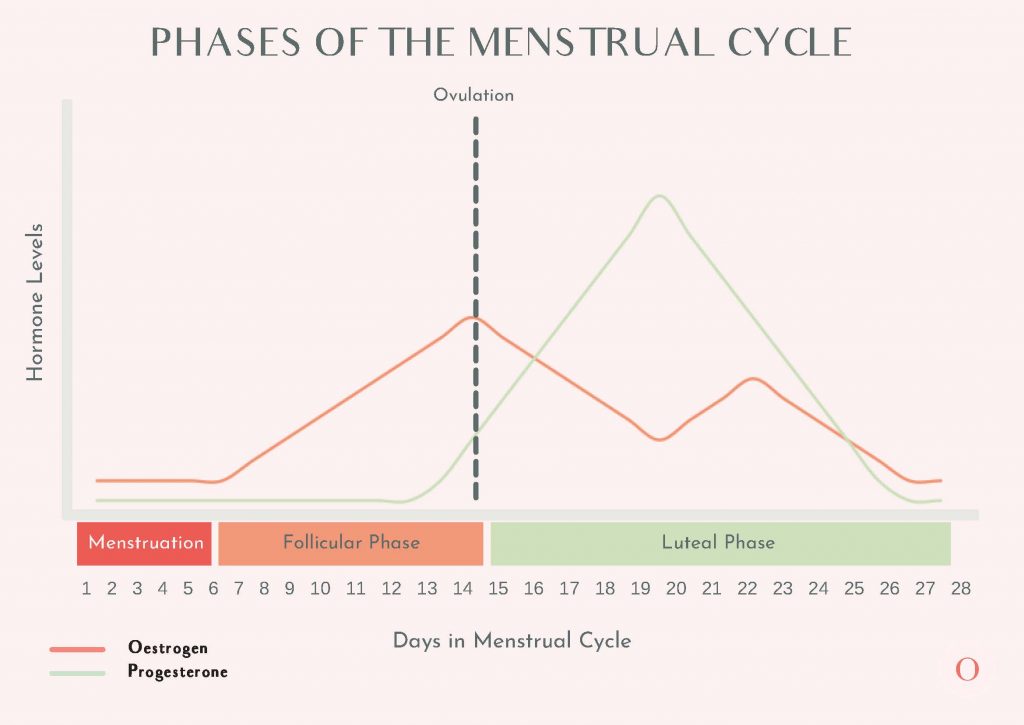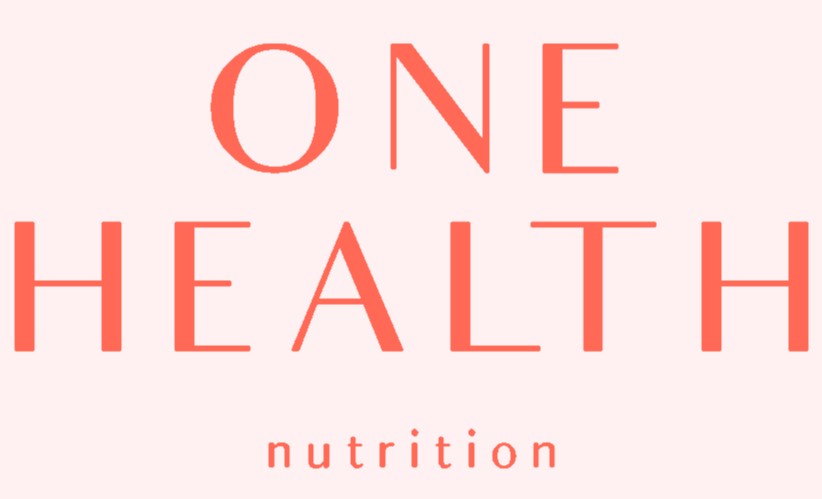No products in the cart.
Return To Shop
HOW DOES YOUR MENSTRUAL CYCLE INFLUENCE YOUR TRAINING & NUTRITION?
The first step in female ‘biohacking’ is recognising that our anatomy and physiology is distinctly different to that of males. That seems like a very obvious thing to say but yet, the exercise and nutrition trends that have been dubbed ‘gold-standard’ in the health and fitness space such as HIIT and Intermittent Fasting are based on scientific research that has been carried out solely on males and then generalised to women (who, again, have very different physiologies). The reason for this is partly because women are considered to be ‘too difficult’ to control for in scientific studies due to their hormonal fluctuations over the course of the month. This has been detrimental to the development of research in all areas of female health in the fitness, nutrition and medical space.
Women are not small men
Dr. Stacy Sims, who is a pioneer in female health research, has dedicated her career to researching the specific sex differences between men and women in an effort to empower women to understand and leverage their female physiology to reach their performance goals. Her famous quote is “women are not small men”!
The good news is that, once you understand these differences you can tailor your training schedule accordingly and your body will thank you for it! The female menstrual cycle is the reason for such significant physiological differences. Our cycle influences everything from how we feel on a daily basis, to how we perform in training, to the type of foods we crave – all of which is driven by our female hormones; oestrogen and progesterone.
We often hear the male hormone, testosterone discussed in the context of strength training due to its ability to promote muscle synthesis. Females have significantly less testosterone which is one of the primary reasons why women simply cannot develop the same level of muscle mass that males can (well, not naturally anyway).
Hormones + Your Cycle
For females, oestrogen and progesterone are the two predominant hormones that fluctuate over the course of the menstrual cycle and ultimately determine why you feel completely different on day 4 of your cycle compared to day 14! Understanding the physiology of what happens over the course of your 28 day cycle is a powerful tool, not only from a training perspective but from an overall health perspective. Your menstrual cycle is a powerful indicator of health and your body’s way of letting you know if there’s something just not right!
The best way to get on the road to understanding your cycle is to track it, every woman’s cycle is completely unique and hence you may feel totally different than your sister or your best friend does during their cycles. There are lots of brilliant apps available to help you track your cycle, most of them also allow you to record any symptoms you may be feeling throughout your cycle such as cramps, tiredness or poor sleep. Clue, Flo, Eve and Fitrwomen are some of the best ones, pick whichever one suits you best. When it comes to your menstrual cycle, knowledge is power and the more in tune you become with it, the more you will be able to leverage it and put strategies in place to help combat any unwanted pms symptoms you may be experiencing.
Exercise, Nutrition + Your Cycle
We all know that there are times throughout our menstrual cycle that we just feel a bit ‘bleughh’ and others where we are feeling like superwoman! There’s good science to explain why everything from your mood, to cravings, to your performance in the gym varies over the course of the month – and it’s all down to our female hormones; oestrogen & progesterone.
A textbook example of the female cycle is 28 days, however, this varies from woman to women and recent research shows that a healthy cycle can be anywhere between 21 and 35-40 days. For the purpose of outlining the different phases of the cycle in this series, I will use a typical 28 day cycle as an example.
It’s worth noting that if you are on any form of hormonal contraception such as the pill or the bar, your natural hormones are flatlined and you will not experience the hormonal fluctuations outlined below;
Let’s have a good look at what’s going on over the course of the month;

Phase 1: Menstruation/ Bleed (Day 1 – 5)
Your cycle begins on day 1 of your period and lasts approximately 5 days (if you have spotting in the lead up to your bleed these days do not count as menstruation i.e. it is the end of your previous cycle). Oestrogen and progesterone are at their lowest and for this reason you may notice a drop in your overall mood. The drop in hormones stimulates the shedding of the uterine lining (your period).
Some women feel menstrual cycle symptoms such as cramps and bloating. Feeling fatigued in this phase is very normal so it’s important to listen to your body and only do what feels comfortable from a training perspective. Research has shown that white cell count is lower in this phase of your cycle – to compensate for this, aim to fuel your body with nutrient dense foods, reduce refined sugar and prioritise sleep to reduce risk of illness or injury.
From a nutrition perspective, women have a heightened sensitivity to insulin in the first half of their cycle (day 1 – 14) meaning that they have an increased ability to to utilise carbohydrates as fuel. Have you ever noticed that you crave carbohydrate rich foods during your period? Or chocolate specifically? Well, it’s not in your head, this is your body’s way of asking you to fuel it with carbohydrates! Recent research has also been able to link chocolate cravings to your body’s desire for magnesium-rich foods! Dark chocolate is an excellent source of magnesium – so don’t fight it, allow yourself a few squares! Try and opt for good quality dark chocolate that has a cacao content of at least 70%. During menstruation your body actually needs approximately 150 additional calories than usual – this is the reason for most women’s increased appetite around this time.
Phase 2: Follicular (Day 6 – 13)
This is still the low hormone phase however, oestrogen continues to rise over the course of this phase until it reaches its peak at ovulation (day 14). In the small percentage of studies that do include female participants, they are usually studied at this stage in the cycle as this is when our physiology is most similar to that of males.
Increasing oestrogen levels are associated with a release of feel-good hormones so you should notice your mood being more energetic and positive in this phase! Oestrogen is an anabolic hormone meaning high oestrogen levels are conducive to building muscle. Research demonstrates the benefit of including the majority of strength and high-impact cardiovascular training in this phase as we are much more capable of hitting high intensities. In a recent study participants who performed most of their strength training in the follicular phase and significantly fewer strength sessions in the luteal phase had higher lean body-mass compared to the female participants who performed the majority of strength training in the luteal phase. Women also have a heightened ability to recover from intense sessions in the follicular phase. So, if strength training and HIIT is the type of exercise you enjoy, now is your time to take full advantage of that!
Similar to during menstruation, carbohydrates are the preferred fuel source in the follicular phase. Opt for good quality complex carbohydrates such as potatoes, brown rice and wholegrains. Females have a shorter recovery window than males; try to get ~25g of highly bioavailable protein on board as soon as possible after training; greek yoghurt and whey protein are great options to have on hand post-workout.
Phase 3: Ovulation (day 14 – 18)
Ovulation itself typically happens around day 14 but the characteristics of the phase are true for approximately 4 days. Ovulation is the release of an egg from the ovaries
Ovulation is the most important part of the female cycle, regardless of whether you are trying to conceive or not. Ovulation is the way our body produces progesterone. Progesterone balances oestrogen and has a calming, anti-anxiety effect on the body, alongside an array of other health benefits from bone, skin and heart health.
Oestrogen levels start to decline as ovulation occurs but then both oestrogen and progesterone start to rise and remain high for the duration of the cycle. Basal body temperature rises after ovulation, this is one of the key indicators that ovulation has occurred. Testosterone is also at its highest during ovulation resulting in a higher sex drive.
Most women feel energetic and confident around the time of ovulation but sometimes the change in hormone levels can impact mood and some women start to feel more lethargic. All types of training are good in this phase. If energy levels drop, lower-impact exercise such as pilates, flexibility work and light jogging are very beneficial. Exercise has been shown to have an anti-inflammatory effect on the body which has a positive impact on PMS symptoms that can start to present in the run up to menstruation.
From a nutrition perspective, fat takes over at this point in the cycle as the preferred fuel source and blood sugar levels are more likely to be unstable. It is important to include good quality protein sources at every meal to help balance blood sugars. New research shows that the current protein guideline of 0.8g per kg of body weight is too low for females, with requirements actually being closer to 2-2.2g per kg of body weight. Adequate protein intake is of key importance for women at every life stage from adolescence to menopause.
Phase 4: Luteal Phase (day 19-28)
Ovulation itself typically happens around day 14 but the characteristics of the phase are true for approximately 4 days. Ovulation is the release of an egg from the ovaries
Ovulation is the most important part of the female cycle, regardless of whether you are trying to conceive or not. Ovulation is the way our body produces progesterone. Progesterone balances oestrogen and has a calming, anti-anxiety effect on the body, alongside an array of other health benefits from bone, skin and heart health.
Oestrogen levels start to decline as ovulation occurs but then both oestrogen and progesterone start to rise and remain high for the duration of the cycle. Basal body temperature rises after ovulation, this is one of the key indicators that ovulation has occurred. Testosterone is also at its highest during ovulation resulting in a higher sex drive.
Most women feel energetic and confident around the time of ovulation but sometimes the change in hormone levels can impact mood and some women start to feel more lethargic. All types of training are good in this phase. If energy levels drop, lower-impact exercise such as pilates, flexibility work and light jogging are very beneficial. Exercise has been shown to have an anti-inflammatory effect on the body which has a positive impact on PMS symptoms that can start to present in the run up to menstruation.
From a nutrition perspective, fat takes over at this point in the cycle as the preferred fuel source and blood sugar levels are more likely to be unstable. It is important to include good quality protein sources at every meal to help balance blood sugars. New research shows that the current protein guideline of 0.8g per kg of body weight is too low for females, with requirements actually being closer to 2-2.2g per kg of body weight. Adequate protein intake is of key importance for women at every life stage from adolescence to menopause.
So, What are the Take Home Messages?
It’s incredibly empowering to understand what’s happening in your body over the course of your cycle and why you feel completely different from one end of the month to the other. You will reap the benefits of learning how to work with your hormones to support your female biology. The impact of which will be visible in so many aspects of your life, from; your training and performance, to your energy levels on a daily basis, to the way you are able to manage stress.
Your monthly cycle is an incredible indicator of health and your body’s way of letting you know if there’s something out of sync. It’s so important that the American College of Obstetricians and Gynecologists states that menstruation is the ‘fifth vital sign of health’, next to the four other key indicators; pulse, body temperature, breathing rate and blood pressure.
Take the time to learn about your own personal cycle, begin to track it and take note of how you are feeling and tailor your training accordingly. Some of my favourite tracking apps are Eve, Flo, CLue and FitrWoman. Try and change your perspective, instead of looking at your cycle as something you have to ‘deal with’ every month, learn to leverage your female hormones and make them work for you!
If you are interested in learning more about this topic, below is a list of resources from women such as Dr. Hazel Wallace, Lara Briden, Alisa Vitti and Dr. Stacy Sims who are doing incredible work in the female health space;
- Book: ‘ROAR’ by Dr. Stacy Sims
- Book: ‘In the Flo’ by Alisa Vitti
- Book: ‘Period Repair Manual’ by Lara Briden
- Podcast: ‘Train like a girl’ – Part 1v& Part 2: Leanne Ward Nutrition ft. Dr. Stacy Sims
- Podcast: ‘#94: Unlock your hormonal advantage by harnessing the power of your infradian rhythm with Alisa Vitti’ – Broken Brain Podcast with Dhru Purohit
- Podcast: The Food Medic – S1 E9 – Periods, Fertility + the Menopause’ (Dr. Hazel Wallace & The @gynageek)
Share Post
